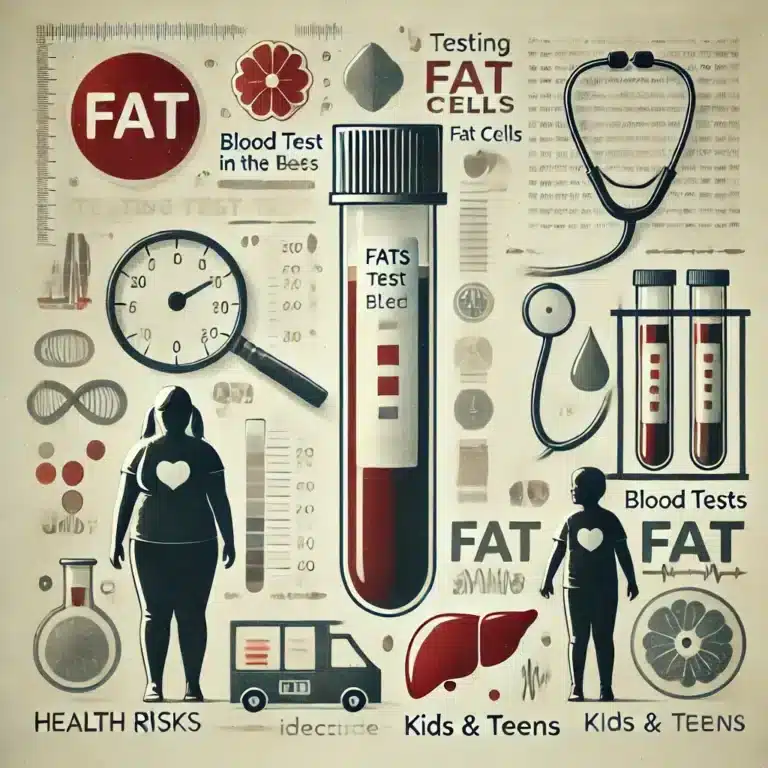Summary
- Children and adolescents from the HOLBAEK study, including those with obesity, participated in a study to assess lipid profiles and their associations with overweight, cardiometabolic risks, and hepatic steatosis.
- Significant differences were found in lipid species between normal weight, overweight, and obese participants, with specific associations with obesity and cardiometabolic risk factors.
- Age and weight status affected the associations between lipid species and cardiometabolic traits, with certain lipids showing age-specific trends in overweight individuals.
- Certain lipid species were found to be associated with cardiometabolic risk factors, with sphingolipids, PEs, and PIs showing significant correlations.
- Lipids were identified as potential mediators of the relationship between BMI reduction and changes in traditional lipids and hepatic steatosis markers, emphasizing the role of lipids in obesity management.
Researchers Explore Lipid Profiles in Children and Adolescents with obesity
A recent study conducted on children and adolescents with obesity aimed to unravel the intricate relationship between lipid profiles and cardiometabolic health. The research, carried out using data from the HOLBAEK study in Denmark, involved analyzing the lipidomic profiles of over 1,300 participants to understand the impact of obesity on lipid metabolism and associated health risks.
Understanding the Study Design and Participants
The study encompassed children and adolescents from the Danish Childhood obesity Biobank, comprising two cohorts – an obesity clinic cohort and a population-based cohort. Various assessments, including anthropometry, imaging scans, and blood parameters, were conducted to evaluate the participants’ health status. The study design also involved a longitudinal analysis of 186 individuals with overweight or obesity to monitor changes over time.
Associations of Lipid Species with obesity and Cardiometabolic Risks
The research revealed significant differences in lipid profiles across different weight statuses, with specific lipid classes showing associations with obesity and related health risks. Lipids such as ceramides, sphingomyelins, phosphatidylethanolamines, and phosphatidylinositols were found to be linked to liver fat content, dyslipidemia, insulin resistance, and other cardiometabolic traits. Moreover, certain lipids demonstrated sex-specific interactions, highlighting the complexity of lipid metabolism in the context of obesity.
Impact of obesity on Age-related Lipid Species
The study also explored the interaction between obesity and age on lipid species, revealing distinct patterns in lipid profiles among different age groups. Notably, the association between obesity and certain lipid species varied with age, underscoring the influence of age on lipid metabolism in the context of obesity.
Predictive Performance of Lipids in Detecting Hepatic Steatosis
Researchers identified a panel of three lipid species that showed promise in predicting hepatic steatosis, a condition characterized by excess fat accumulation in the liver. This lipid panel, combined with liver enzymes, exhibited improved accuracy in detecting hepatic steatosis, underscoring the potential of lipidomics in diagnosing liver-related health conditions.
Correlations of Lipids with Cardiovascular and Inflammatory Markers
The study also explored the correlations between lipid species and markers of cardiovascular disease and inflammation. Several lipid classes were found to be associated with cardiovascular risk factors and inflammatory markers, highlighting the potential role of lipid profiles in assessing overall health status and disease risk.
Mediation Effects of Lipids on Cardiometabolic Traits
Analyses revealed that specific lipid species mediated the relationship between obesity and cardiometabolic traits, shedding light on the underlying mechanisms by which lipid metabolism influences health outcomes. Changes in lipid profiles were found to partially explain the associations between obesity and cardiometabolic risks, emphasizing the intricate interplay between lipid metabolism and overall health.
Implications of Personalized Obesity Management
The study also examined the effects of nonpharmacological obesity management on lipid profiles and cardiometabolic health. Participants undergoing obesity management experienced improvements in BMI, body fat percentage, and various health parameters. Changes in lipid profiles following obesity management were observed, with certain lipid classes showing significant alterations post-intervention.
Conclusion
In conclusion, the study provides valuable insights into the association between lipid profiles, obesity, and cardiometabolic health in children and adolescents. By unraveling the complex interplay between lipid metabolism and health outcomes, researchers aim to pave the way for personalized interventions and tailored management strategies for individuals with obesity. This research underscores the importance of lipidomics in understanding and addressing health risks associated with obesity in pediatric populations.
Source link
Pediatrics, Obesity, Cardiology


